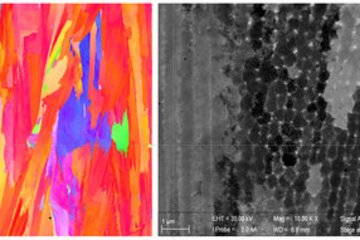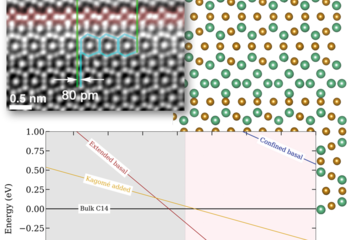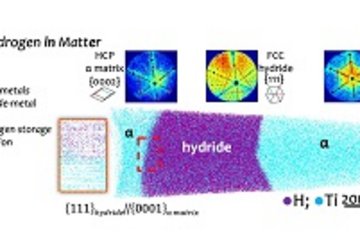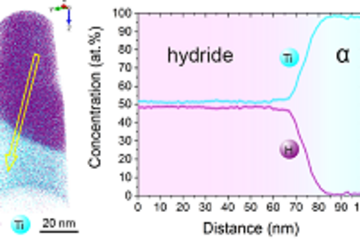All genres
21.
Talk
Ab-Initio Calculation of the Standard Hydrogen Electrode Potential and Application to the Mechanism of the Oxygen Reduction. Workshop on Converging Theoretical and Experimental Approaches to Corrosion, MPIE, Düsseldorf, Germany (2007)
22.
Talk
Modelling adhesion and delamination at oxide/polymer interfaces. Multiscale Material Modeling of Condensed Matter, MMM2007, St. Feliu de Guixols, Spain (2007)
23.
Talk
Oxygen Reduction at Thiol/Au(111)SAMs, Atomistic Modelling and Experiment. 212th ECS Meeting, Washington, D.C., USA (2007)
24.
Talk
A Monte Carlo - DFT Study: Adsorption of organosilanes on polar ZnO(0001) surfaces. 43rd Symposium on Theoretical Chemistry, Saarbrücken, Germany (2007)
25.
Talk
Adsorption of organosilane molecules on polar ZnO (0001) surfaces. ECASIA 2007, 12th European Conference on Applications of Surface and Interface Analysis, Brussels-Flggey, Belgium (2007)
26.
Talk
Extended defects in GaN from an atomistic modelling point view. OPTO 2007, Integrated Optoelectronic Devices, San Jose, California, USA (2007)
27.
Talk
Degradation of Alkanethiol/Au(111) Self-Assembled Monolayers During Oxygen Reduction. 1. Harzer Ab initio Workshop, Clausthal-Zellerfeld, Germany (2006)
28.
Talk
A DFT study of Alkanethiol adsorption sites on Au(111) surfaces. A DFT study of Alkanethiol adsorption sites on Au(111) surfaces, Clausthal, Germany (2006)
29.
Talk
Ab initio studies of molecular adsorption on g-AlOOH (001)-surface. 1. Harzer Ab initio Workshop, Clausthal, Germany (2006)
30.
Talk
Movement and pinning of dislocations in SiC. EDS 2006, Halle, Germany (2006)
31.
Talk
Dislocations in single crystal CVD diamond and their interaction with intrinsic point defects. EDS 2006, Halle, Germany (2006)
32.
Talk
A theoretical investigation of transition metal defects trapped at dislocations in silicon. EDS 2006, Halle, Germany (2006)
33.
Talk
Adsorption of water molecule on gamma-AlOOH (001)-surface. Internationaler Workshop auf Schloss Ringberg, Schloss Ringberg, Germany (2006)
34.
Talk
Theory of Dislocations in SiC. International Conference on Silicon Carbide and Related Materials, Pittsburgh, PA, USA (2005)
35.
Talk
The Modelling of Dislocations in Semiconductor Crystals. EUROMAT 2005, Prague, Czech Republic (2005)
36.
Talk
<100> dislocations in single crystal CVD diamond - Theoretical aspects. De Beers Diamond conference, Oxford, UK (2005)
37.
Talk
The effect of charge on Basal dislocations in silicon carbide. EDS 2004, Chernogolovka, Russia (2004)
38.
Poster
FEM Simulation of the Scanning Electrochemical Potential Microscopy (SECPM). 2nd IMPRS-SurMat Workshop in Surface and Interface Engineering in Advanced Materials, Ruhr-Universität Bochum, Bochum, Germany (2008)
39.
Poster
Adsorption of Organosilanes on ZnO Surfaces. 2nd IMPRS-SurMat Workshop in Surface and Interface Engineering in Advanced Materials, Ruhr-Universität Bochum, Bochum, Germany (2008)
40.
Poster
A DFT study of Alkanethiol adsorption sites on Au(111) surfaces. 2nd IMPRS-SurMat Workshop in Surface and Interface Engineering in Advanced Materials, Ruhr-Universität Bochum, Bochum, Germany (2008)









